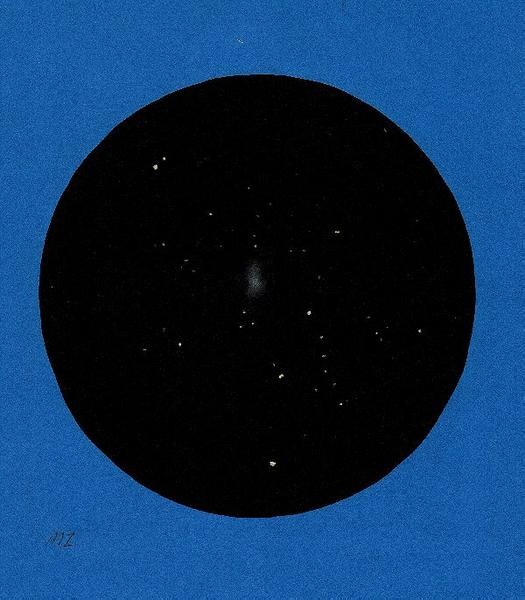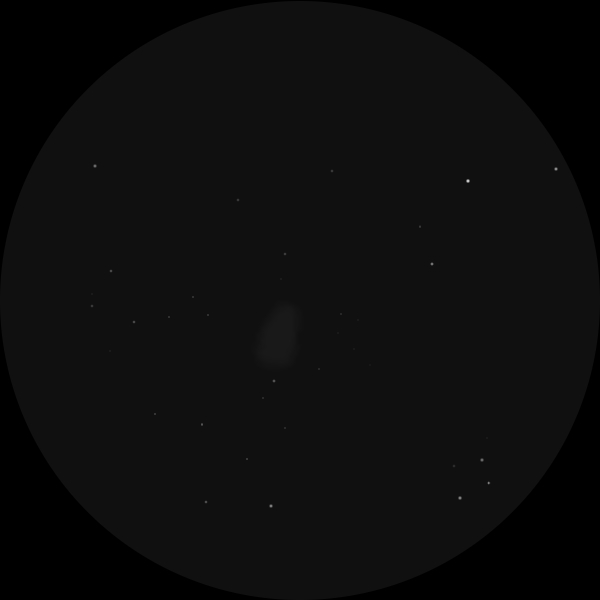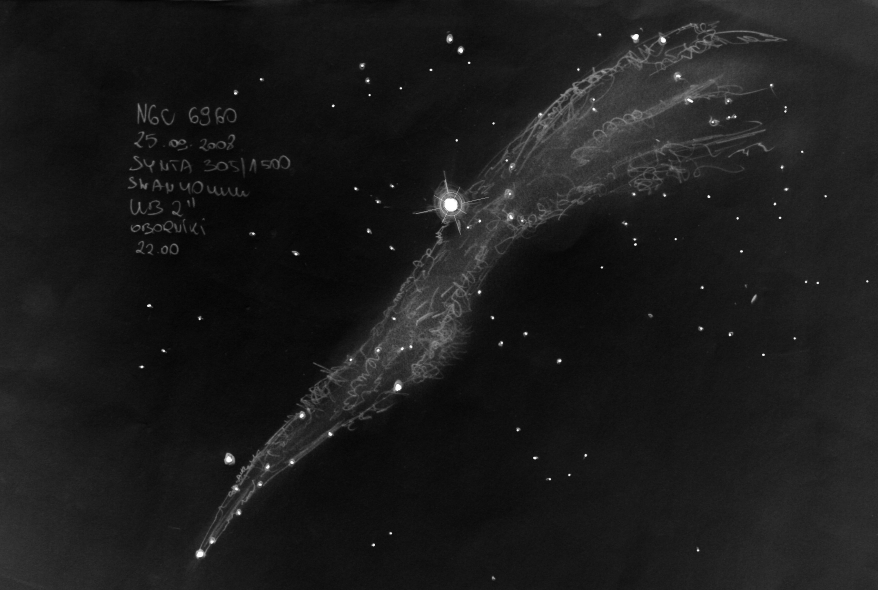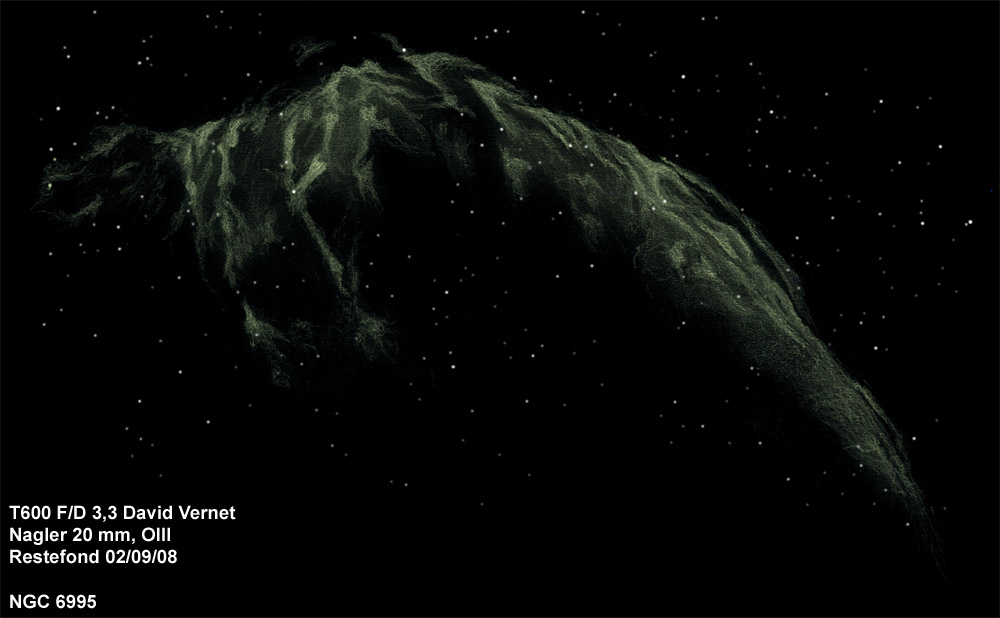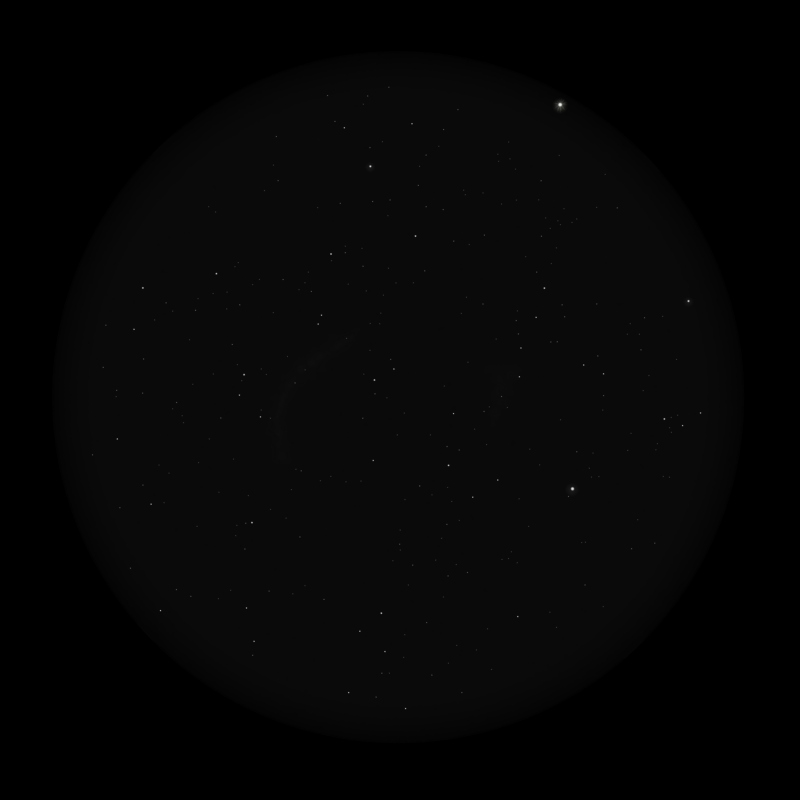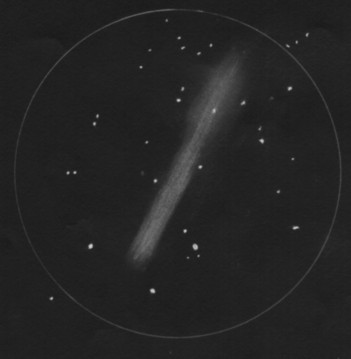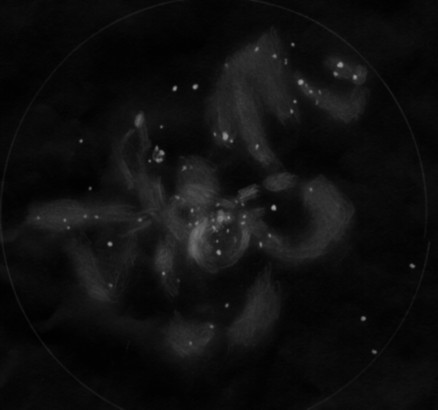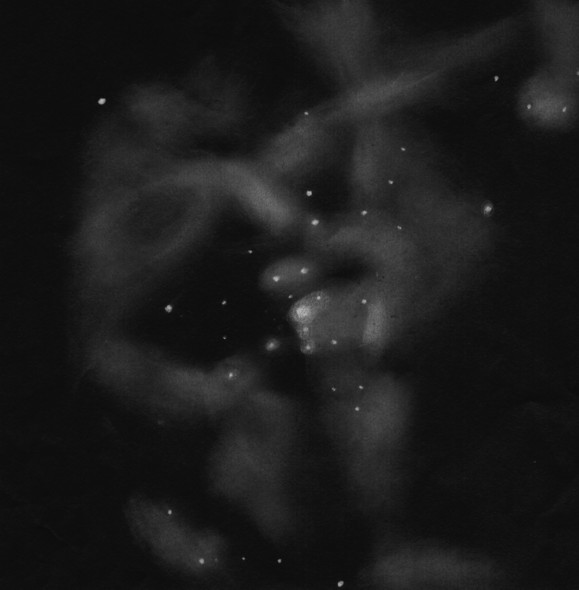M1, The Crab Nebula in Taurus
Sketch and Details by Bernard Augier
Messier1
The Crab Nebula
Dobson T600
I was surprised not to found many drawing of the famous Crab Nebula,
espacially with large apperture scope (over 11″).
So I decided to draw my own with a 24″ Dobson F/D 3,3 on equatorial
platform. I’m living in French Alps, in a little village.called Saint
Etienne-de-Tinée.
In fact it takes me two nights on 28 and 29 december 2008. Temperature of –
11°C, Lightly windy, SQM at 21.20 not so good.
It is very usefull to use plenty of various magnification from 100 to 800
and observe without and with OIII filter.
It results (in) plenty of different perceptions and the sketch is really a
combination of all of them.
Without filter the shape of the nebula is smooth and familiar with “gulf” on
the two sides, and a sort of mushroom on the top. With filter, the
perception is surprising with a very “fat” shape on whch you can see the
famous filaments, and the border is ruffled and tormented.
The best wiew was at x200 with OIII.
Bernard Augier

